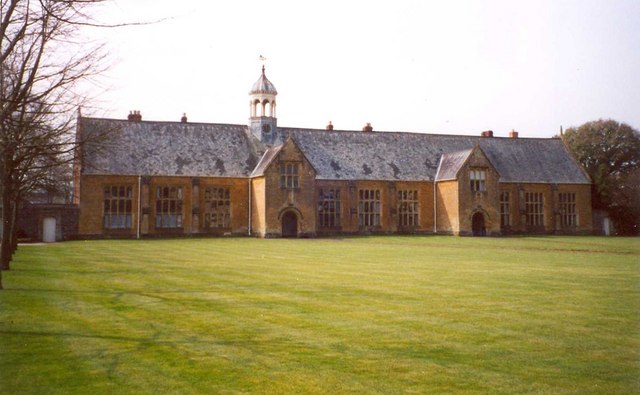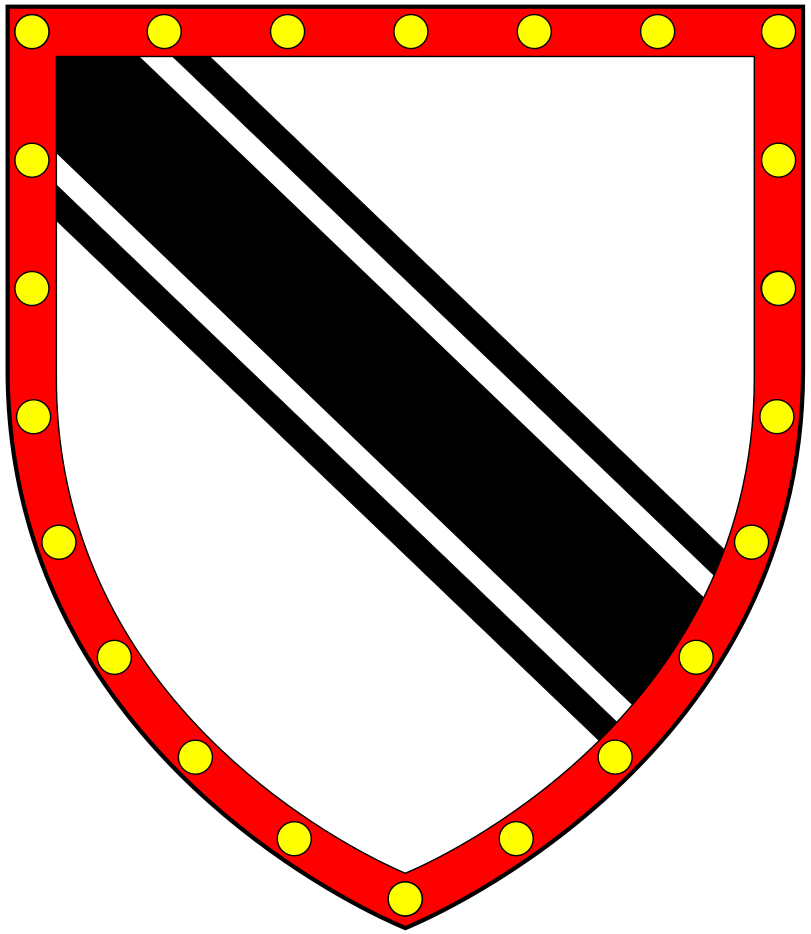|
George Slee
George Slee (died 1 September 1613) of the Great House, Peter Street, Tiverton, Devon, was a wealthy wool merchant and clothier. He founded ''Slee's Almshouses'' in Tiverton, the building of which survives next to the Great House in Peter Street. His ornate chest tomb survives in St Peter's Church, Tiverton. Career He manufactured and exported (via the port of Exeter, further downstream the River Exe from Tiverton) the famous Tiverton '' kerseys''. Marriage and children On 10 August 1581 he married Joan Chilcot (d. 13 June 1630), a sister of Robert Chilcot (c.1560-1609) (''alias'' Comin/Comyns) of Tiverton, merchant, founder of ''Chilcot's School'', in Peter Street, Tiverton. Joan Chilcot's mother was Eleanor Blundell, a sister of the eminent Tiverton merchant Peter Blundell (c. 1520-1601), founder of Blundell's School. Slee was one of the executors of Peter Blundell's will and was one of the founding feoffees of Blundell's School. By his wife he had 7 children, including ... [...More Info...] [...Related Items...] OR: [Wikipedia] [Google] [Baidu] |
Great House Of St George, Tiverton-geograph
Great may refer to: Descriptions or measurements * Great, a relative measurement in physical space, see Size * Greatness, being divine, majestic, superior, majestic, or transcendent People * List of people known as "the Great" *Artel Great (born 1981), American actor Other uses * ''Great'' (1975 film), a British animated short about Isambard Kingdom Brunel * ''Great'' (2013 film), a German short film * Great (supermarket), a supermarket in Hong Kong * GReAT, Graph Rewriting and Transformation, a Model Transformation Language * Gang Resistance Education and Training Gang Resistance Education And Training, abbreviated G.R.E.A.T., provides a school-based, police officer instructed program that includes classroom instruction and various learning activities. Their intention is to teach the students to avoid gang ..., or GREAT, a school-based and police officer-instructed program * Global Research and Analysis Team (GReAT), a cybersecurity team at Kaspersky Lab *'' Great!'', a 20 ... [...More Info...] [...Related Items...] OR: [Wikipedia] [Google] [Baidu] |
Chest Tomb
Funerary art is any work of art forming, or placed in, a repository for the remains of the dead. The term encompasses a wide variety of forms, including cenotaphs ("empty tombs"), tomb-like monuments which do not contain human remains, and communal memorials to the dead, such as war memorials, which may or may not contain remains, and a range of prehistoric megalithic constructs. Funerary art may serve many cultural functions. It can play a role in burial rites, serve as an article for use by the dead in the afterlife, and celebrate the life and accomplishments of the dead, whether as part of kinship-centred practices of ancestor veneration or as a publicly directed dynastic display. It can also function as a reminder of the mortality of humankind, as an expression of cultural values and roles, and help to propitiate the spirits of the dead, maintaining their benevolence and preventing their unwelcome intrusion into the lives of the living. The deposit of objects with an appare ... [...More Info...] [...Related Items...] OR: [Wikipedia] [Google] [Baidu] |
Kersey (cloth)
Kersey is a kind of coarse woollen textile, cloth that was an important component of the textile trade in Medieval England. History It derives its name from kersey yarn and ultimately from the village of Kersey, Suffolk, having presumably originated in that region. However the cloth was made in many places. It was being woven as early as 1262 in Andover, Hampshire, where regulations prohibited the inclusion of Spanish wool in kerseys. By 1475, the West Riding of Yorkshire including Calderdale was also a major producer, while Devon and Somerset were major producers and exporters until the manufacture later moved to serge (fabric), serge making. Kersey was a lighter weight cloth than broadcloth. English kerseys were widely exported to central Europe and other places: a surviving business letterLetter dated June 26th, 1578, from John Withal in Santos (São Paulo), Santos, Brazil, to Mr Richard Staper, excerpted in Richard Hakluyt (ed. Jack Beeching), ''Voyages and Discoveries'', (Pengu ... [...More Info...] [...Related Items...] OR: [Wikipedia] [Google] [Baidu] |
Chilcot School, Tiverton-geograph
Chilcot is a surname. Notable people with the surname include: * John Chilcot (born 1939), chairman of the Iraq Inquiry, referred to as the Chilcot Inquiry * Thomas Chilcot Thomas Chilcot (1707?1766), was an English organist and composer. Life Thomas Chilcot of Bath, Somerset was born in the West of England (probably Bath) in or about 1707. He was the son of John Chilcot and Elizabeth Powell. Records of his birth, l ... (1707?–1766), English organist and composer See also * Chilcott (surname) {{surname ... [...More Info...] [...Related Items...] OR: [Wikipedia] [Google] [Baidu] |
Peter Blundell
Peter Blundell (c. 1520–1601) was a prosperous clothier, trading between Tiverton and London. He died in April 1601, never having married and with no known issue. On his death, he left over £32,000 cash to fellow clothiers and their families, his employees, created several charitable trusts, and gave £2400 to build Blundell's School, to be a free grammar school. Blundell also left £2000 in his will for the endowment of six scholars from The School in Divinity at the Universities of Oxford and Cambridge; arrangements were made for Blundell Scholars to enter Balliol and Sidney Sussex colleges respectively. He was buried on 9 May 1601 at St Michael Paternoster Royal in London. Blundell Park, the ground of Grimsby Town Football Club Grimsby Town Football Club is a professional association football, football club based in Cleethorpes, North East Lincolnshire, England, that in the 2022–23 season will compete in , the fourth tier of the English football league system, ... [...More Info...] [...Related Items...] OR: [Wikipedia] [Google] [Baidu] |
Blundell's School
Blundell's School is a co-educational day and boarding independent school in the English public school tradition, located in Tiverton, Devon. It was founded in 1604 under the will of Peter Blundell, one of the richest men in England at the time, and moved to its present site on the outskirts of the town in 1882. While the full boarding fees are £38,985 per year, the school offers several scholarships and bursaries, and provides flexi-boarding. The school has 360 boys and 225 girls, including 117 boys and 85 girls in the Sixth Form, and is a member of the Headmasters' and Headmistresses' Conference. The ''Good Schools Guide'' calls Blundell's a "distinguished rural school of ancient lineage". History Peter Blundell, one of the wealthiest merchants of Elizabethan England, died in 1601, having made his fortune principally in the cloth industry. His will set aside considerable money and land to establish a school in his home town "to maintain sound learning and true religion". ... [...More Info...] [...Related Items...] OR: [Wikipedia] [Google] [Baidu] |
Feoffee
Under the feudal system in England, a feoffee () is a trustee who holds a fief (or "fee"), that is to say an estate in land, for the use of a beneficial owner. The term is more fully stated as a feoffee to uses of the beneficial owner. The use of such trustees developed towards the end of the era of feudalism in the Middle Ages and declined with the formal ending of that social and economic system in 1660. The development of feoffees to uses may have hastened the end of the feudal system, since their operation circumvented vital feudal fiscal mechanisms. Development The practice of enfeoffing feoffees with fees, that is to say of granting legal seizin in one's land-holdings ("holdings" as only the king himself "owned" land by his allodial title) to a group of trusted friends or relatives or other allies whilst retaining use of the lands, began to be widespread by about 1375.McFarlane, p.146 The purpose of such an action was two-fold: *Akin to modern tax avoidance, it was a legal ... [...More Info...] [...Related Items...] OR: [Wikipedia] [Google] [Baidu] |
Martin Dunsford
Martin Dunsford (1744–1807) of Tiverton in Devon, was an English merchant and Dissenter, known as an antiquarian and radical politician. His work ''Memoirs of the Town and Parish of Tiverton'' is noted as an attempt to write of the town as a whole community. Life He was the son of Martin Dunsford (1711–1763) who manufactured serge in Tiverton, Devon, having a large workshop created from a row of houses, and a workforce of over 50. His mother was Anne Stone. Educated at Blundell's School in Tiverton, he went into his father's business at age 13. He lived at Villa Franca, Park Road, now a listed building. Dunsford is described in Lewis Namier's ''The Structure of Politics at the Accession of George III'' as the leader of a movement in Tiverton for extending the local franchise, at the end of the 18th century. Holding local political office as a Churchwarden, he opposed the Ryder family who controlled the parliamentary elections in the town. In 1781 he set up a petition to Parli ... [...More Info...] [...Related Items...] OR: [Wikipedia] [Google] [Baidu] |
Thomas Westcote
Thomas Westcote (c. 1567 – c. 1637) (''alias'' Westcott) of Raddon in the parish of Shobrooke in Devon, was an English historian and topographer of Devon. Biography He was baptised at Shobrooke in Devon on 17 June 1567. He was the third son of Philip Westcote (died 1601) of West Raddon in the parish of Shobrooke, by his wife Katharine Waltham, a daughter of George Waltham of Brenton in the parish of Exminster, Devon. In his youth he was a soldier, traveller, and courtier, but in middle age he retired to a country life, probably living at West Raddon with his eldest brother, Robert. In 1624 he held a lease of Thorn Park in the parish of Holcombe Burnell. Westcote interested himself in local antiquities, encouraged by his friendships with fellow Devonshire historians Sir William Pole (1561–1635) and Tristram Risdon (1580–1640). He aimed at a description of Devon, following the model of the ''Survey of Cornwall'' by Richard Carew (1555–1620) published in 1602. He was encour ... [...More Info...] [...Related Items...] OR: [Wikipedia] [Google] [Baidu] |


